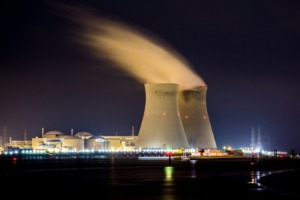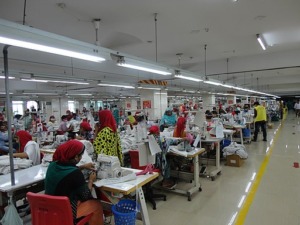Today’s ESG Updates
Geopolitical tensions stir up markets: Israel’s strike on Iran’s nuclear sites triggered a global market drop and a 13% surge in oil prices.
EU nuclear expansion demands €241B investment: The EU plans to boost nuclear capacity to 109 GW by 2050, requiring massive public and private funding.
Lightsource bp launches first major project in Taiwan: Lightsource secured $200M for fishery solar farm projects in Taiwan, blending clean energy and aquaculture.
Fashion brands face backlash over worker neglect: A new report accuses global fashion brands of greenwashing, citing failure to adopt “Just Transition” policies.
Klimado – Navigating climate complexity just got easier. Klimado offers a user-friendly platform for tracking local and global environmental shifts, making it an essential tool for climate-aware individuals and organizations.
The stock market falls after Israel strikes Iran’s nuclear sites
The stock market saw a significant drop and gold and oil prices rose after Israel struck nuclear program sites in Iran on Thursday. Early Friday morning, stocks dropped significantly in Asia, the S&P 500 index fell by 1.3%, and the European market saw a 1.1% decrease. Nevertheless, crude oil was hit the hardest. With the largest one-day increase since March 2022, oil prices rose by about 13%, and many fear that the strike could have long-lasting repercussions. The price of gold also saw a 1.7% increase. Iran has launched more than 100 drones in retaliation. The market remains highly volatile as the violence between the two countries escalates.
***
Further reading: Oil prices surge and stocks drop after Israel attacks Iran
EU nuclear energy plans could cost upwards of €241 billion

 As part of the energy transition, much of Europe is looking to nuclear power. Photo Credit: Nicolas Hippert
As part of the energy transition, much of Europe is looking to nuclear power. Photo Credit: Nicolas Hippert
As the debate over expanding Europe’s nuclear capabilities continues, member states of the European Union are developing a financial plan to increase nuclear energy production. Currently, the EU has 98 gigawatts (GW) of nuclear capacity. It hopes to expand this capacity to 109 GW by the end of 2050, with plants in Hungary and Slovakia already under construction. Several factors are at play that challenge this increase, most significantly, a substantial financial investment. As it stands, this nuclear expansion project will require €205 billion for new plants and €36 billion to improve current reactors, totaling €241 billion ($278 billion). The European Commission is calling on private investors to aid in the funding, working to establish new funding instruments to mitigate risks.
***
Further reading: EU’s nuclear energy plans require 241 billion euro investment, draft shows
Lightsource bp fishery solar project begins in Taiwan

 The introduction of fishery solar farms in Taiwan will have numerous benefits. Photo Credit: Tian Dayong
The introduction of fishery solar farms in Taiwan will have numerous benefits. Photo Credit: Tian Dayong
This week, Lightsource bp launched plans for a new fishery solar project in Taiwan. A fishery solar farm is a dually beneficial project, producing renewable energy while allowing for fish farming. The company has secured 6 billion New Taiwan dollars (approximately $200 million) in funding and plans to begin projects in both the Budai and Yizhu regions. The fishery solar farm in Budai is expected to be the largest in the country, producing 180,000 megawatt hours (MWh) of energy annually. This clean energy production would cut about 115,000 tonnes of CO₂ emissions each year, while meeting the energy needs of around 41,000 households. Construction is set to begin this month.
***
Further reading: Lightsource bp secures financing on its first project in Taiwan and its pilot fishery solar project globally
Fashion industry under scrutiny for mistreatment of workers

 Garment workers are seeing the effects of climate change daily; industries are failing to take note. Photo Credit: Wikimedia Commons
Garment workers are seeing the effects of climate change daily; industries are failing to take note. Photo Credit: Wikimedia Commons
Various fashion giants, ranging from luxury to fast fashion, are facing allegations of greenwashing and mistreatment of employees. A recent report by the Business & Human Rights Resource Centre (BHRRC) found that 44 of 65 brands analyzed failed to adopt a “Just Transition” policy, despite commitments to reduce emissions. A “Just Transition” policy was introduced during COP27 in 2022, ensuring the security of employees as companies make efforts to decarbonize their operations. As things stand, the fashion industry is well on its way to producing 25% of global greenhouse gas emissions by 2050. Automation is forcing workers out, and intense heat waves throughout Southeast Asia are leading to heat-related illnesses. Critics warn that without worker inclusion, brands risk greenwashing and neglecting human rights in their pursuit of sustainability goals.
***
Further reading: Fashion brands accused of shortcuts on climate pledges overlooking workers
Editor’s Note: The opinions expressed here by the authors are their own, not those of impakter.com — Cover Photo Credit: Wikimedia Commons
